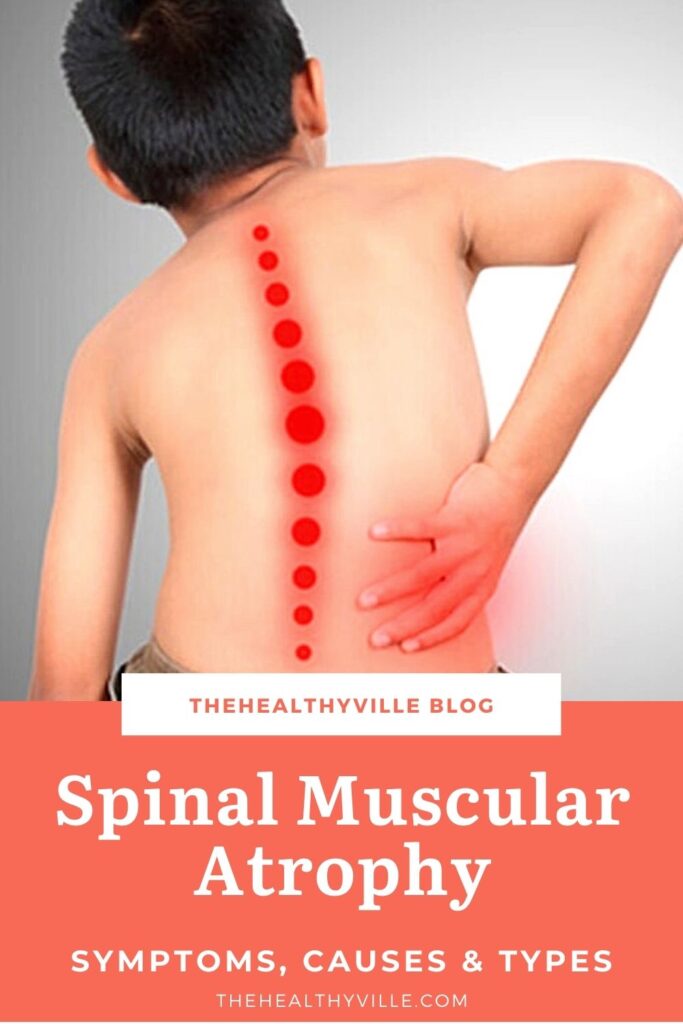Spinal muscular atrophy symptoms differ, depending on the type of the disease you have, but the causes are the same. Learn everything!
This type of atrophy affects the development of motor neurons due to a protein deficiency as a consequence of a mutation in the SMN1 gene.
Spinal muscular atrophy is a rare genetic disease that affects motor neurons. When the central nervous system receives a stimulus, it elaborates an adequate response to the processed information, which can be endocrine or muscular depending on the stimulus.
To develop a response in the form of movement, these types of neurons transmit the information to the muscle cells. Therefore, we are talking about skeletal muscles, those that we can move voluntarily. Throughout the spinal cord, you have the motor neurons.
Ultimately, the breakdown of these important cells results in problems related to movement and muscle pain.
Spinal muscular atrophy symptoms and types
Depending on the symptoms that the patient presents, we can differentiate between several categories of this disease:
Type I
It is also known as Werdnig-Hoffmann disease. Symptoms appear before six months of life. The individual stops developing during the growth stages and has great muscle weakness (hypotonia).
This alteration can cause difficulty in breathing, when accompanied with the abnormal secretion of other substances. On the other hand, the processes involved in eating (chewing, swallowing, etc.) are altered.
The most striking symptom is the position of the legs “in frog legs” that appears together with a general lack of reflexes. In addition, involuntary muscle jerks (fasciculations) can occur.
II Type
Symptoms appear between 6 and 18 months of life. Subjects have difficulty getting up and sitting down, but can remain seated or standing on their own.
On the other hand, they are not able to walk without help. Problems related to eating and breathing appear frequently. Tremors may appear, especially when the patient extends his fingers.
Type III
This is the Kugelber-Welander disease. Symptoms appear from infancy to puberty. Patients can walk and sit on their own, although bending over can cause pain.
In some cases, tremors and scoliosis (deviation of the spine) may appear together with alterations at the joint level.
IV Type
Symptoms appear after adolescence, when the individual is already an adult (usually over 35 years). We also know it as the Kennedy disease.
The patient experiences muscle weakness in the facial muscles and severe feeding problems. Muscle atrophy spreads and gets worse over time, and the patient losses the feeling in the hands and feet. Fasciculations are common and other neuropathies can develop.
Causes
This disorder has a genetic origin, there is an alteration in the SMN1 gene. In this way, the patient is not able to synthesize certain proteins essential for the maintenance of motor neurons. Eventually, degeneration of these cells occurs along with skeletal muscle weakness.
For this mutation to be present in the children, both parents must be carriers of the defective gene, it is an autosomal recessive inheritance.
Diagnosis
The most commonly used complementary tests to identify this pathology are:
Analysis of the patient’s DNA by drawing blood and examining it in the laboratory. In this way, the scientists examine the gene in question and identify whether or not the mutation is present.
Electromyography and nerve conduction velocity studies, to analyze the electrical activity of the central nervous system.
Muscle biopsy to detect neuromuscular diseases.
Other routine tests such as urinalysis can detect metabolic abnormalities.
Spinal muscular atrophy treatment
So far, no effective cure for this disease has been discovered. Within the therapeutic arsenal used there are numerous treatments focused on alleviating the symptoms that the patient may present, among them we include medications to control spasms and analgesics that improve muscle pain.
Recently, the success of a group of professionals from the Vall d’hebron Pediatric Neurology Service (Barcelona) in treating infantile spinal muscular atrophy (in its presymptomatic phase) has come to light. This is a ray of hope for both patients and families.
Physiotherapy sessions are useful to avoid other complications and alleviate the patient’s discomfort. Some orthotic devices (such as the wheelchair) help the patient to move around and perform activities as comfortably as possible.
Finally, it is important to establish an adequate diet and control the processes of feeding and pulmonary ventilation. In some cases, individuals need intubation because they have difficulty swallowing or swallowing. If they cannot breathe properly, they may even get high pressure inhaled oxygen.
Don’t forget to SHARE the spinal muscular atrophy symptoms, causes and types with your friends and family on your social networks!

